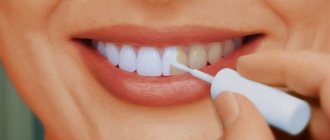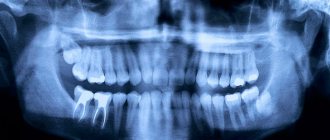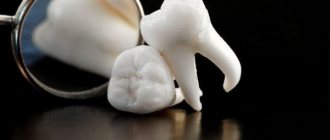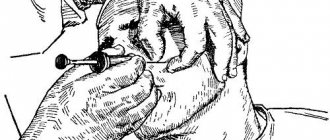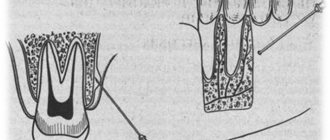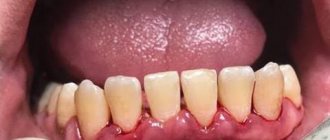05.12.2019
A huge number of people are afraid to visit dentists because dental treatment is usually accompanied by pain and other unpleasant sensations. There is even a special term - dentophobia - fear of dentists, which, according to some data, can describe 84% of patients. However, nowadays, anesthesia comes to the aid of dental phobes, facilitating a calm dental procedure.
But people are usually concerned about how long the freezing effect lasts and how to quickly recover from dental anesthesia, because it can interfere with eating or distort your smile.
Classification of anesthesia in dentistry
Anesthesia, or anesthesia, in dentistry has a certain classification. Various drugs and their types are used in individual cases, depending on the time required by the doctor for the operation, the patient’s condition, and the presence of severe fear or phobia. First of all, anesthesia is divided into two types:
- general anesthesia, or anesthesia;
- local anesthesia.
Anesthesia is usually used only in isolated cases of necessity, if the operation is expected to be very long. So, general anesthesia can last about six hours. Moreover, it has a number of advantages relative to local anesthesia:
- you can remove several teeth or perform several procedures in one go;
- Treatment under general anesthesia is completely painless;
- During anesthesia, the secretion of saliva is blocked, which is very beneficial to the doctor.
However, in most cases there is simply no need for anesthesia, so local anesthesia is used, which is often popularly called tooth freezing.
What is anesthesia?
The procedure for injecting special drugs aimed at eliminating local sensitivity is called anesthesia. The active substance of the anesthetic blocks the conduction of impulses from nerve endings to the brain, preventing the occurrence of pain in response to manipulations. After the anesthetic wears off, sensitivity is completely restored.
Today in dentistry there are several types of local anesthesia. The most commonly used anesthesia is an injection into the area of one tooth. Other methods are aimed at “switching off” the nerves of several teeth at once.
The anesthesia procedure allows you to avoid discomfort during dental procedures, which is why anesthesia is used everywhere during the treatment and extraction of teeth.
Features of local anesthesia
Local anesthesia is simple and in most cases can satisfy the need for pain relief, which is why it is especially popular among dentists. In turn, tooth freezing is divided into the following types:
Application anesthesia
It is carried out using gels or sprays that are applied to the gum or cheek. The effect can be observed approximately five minutes after application. However, topical anesthesia is used only in cases where it is necessary to get rid of tartar, remove a falling out or loose tooth, treat gums, or carry out another practically painless procedure, because the spray or gel freezes only the surface of the mucous membrane.
Moreover, topical anesthesia cannot be used for children under five years of age, as well as people with lung diseases.
Infiltration anesthesia, or injection
This type of anesthesia is performed by injecting an anesthetic into the soft tissue located near the diseased tooth to freeze it. It affects the deep layers of tissue. The injection is administered near the location of the entrance of the nerve trunks leading to half of the jaw or its separate part. Usually, not only the cheek and the necessary gums are frozen, but also other organs of the oral cavity, since the exits of all nerves are located close to each other.
It is also important to understand that freezing the upper and lower jaws are somewhat different in their methodology and action due to differences in the structure of the skeleton. Considering that the lower jaw usually has greater loads relative to the upper jaw, evolutionarily it has developed that it has a more dense structure and its muscles are more developed.
Therefore, when injecting an anesthetic into the lower jaw, the needle is inserted deeper, which also affects the duration of the anesthetic.
Frequently asked questions to the doctor
Duration of anesthesia
Hello, I would like to know how long it takes for the frost to go away after dental treatment?
How long it takes for a frozen tooth to go away depends on what type of drug was used, namely:
- Medicines injected into the gum or cheek area act for a few minutes.
- An anesthetic injected into the upper jaw lasts up to three hours. Everything will depend on the individual characteristics of the patient.
- The anesthetic should be injected into the lower jaw as deeply as possible. Because of this, it is eliminated more slowly and lasts up to four hours, and sometimes longer.
The duration of action of the drug is different for each person, everything is determined by the characteristics of his body. But if you feel that things are not going away for a day or more, then of course you should consult a doctor.
Toothache
Hello, I haven’t been able to sleep properly for several days now, the whole point is that the tooth has darkened a little, it hurts and reacts to hot things. I already had it filled several years ago, tell me, what should I do now?
A reaction to hot drinks is evidence that the nerve is inflamed; you need to visit a dentist. An x-ray should be taken, after which a treatment plan will be selected.
Feasibility of treatment
I have a small hole in my tooth, tell me, is it possible not to treat it for now?
The most important thing in your case is to visit the hospital as soon as possible and begin treatment. A small hole can cause even more problems than a large one. There is no need to be afraid of the procedures; they are performed under anesthesia, there will be no pain.
Frequency of dental visits
I have a growing daughter, how often should we go to the dentist for a checkup?
It is generally accepted that you need to take your child to the dentist at least once every three months. But why so often? The thing is that a child’s baby teeth are less mineralized, which means they are much more likely to suffer from caries. These teeth have thin walls; after infection, it takes several months for them to completely collapse. By visiting your dentist regularly, you can prevent the development of any diseases.
Duration of action of the anesthetic
A huge number of patients are usually interested in how quickly tooth frost will go away, but it is necessary to understand that the duration of action of the anesthetic depends not only on the type of anesthesia, the area of its application, dosage, the person’s age, metabolic rate and other individual parameters, but also on the painkiller used facilities. Thus, dental anesthetics can be divided into three groups according to the duration of their effect:
- short-acting (Novocaine) – up to twenty minutes;
- medium-acting (Prilocaine, Articaine, Trimecaine, Lidocaine) - from half an hour to an hour;
- long-acting (Bupivacaine) - the effect in some cases can last up to six hours, but usually a sensitivity-blocking dosage is used for two hours.
However, as mentioned above, there are a number of factors that influence the duration of action of the painkiller:
- the presence of inflammation at the site of drug administration;
- the presence of vasoconstrictors in the composition of the anesthetic - substances that narrow blood vessels;
- injection depth;
- site of drug administration;
- chronic diseases of the urinary system;
- individual parameters of the human body.
But in most cases, drugs when injected into the upper jaw last for the next two hours, and when injected into the lower jaw - up to four. However, again, this all depends on the freezing method and many other factors, so if the anesthesia persists for a longer period of time, there is no cause for concern.
Only if freezing remains relevant even after 24 hours should you consult your doctor.
Methods of pain relief
There are many types of anesthesia in dentistry: local and general. According to the methods of pain relief, they are also divided into several types: non-medicinal and medicinal. In most cases, all methods and types of pain relief operate on the same principle - they neutralize the conductivity of the nerve canal, that is, the nerve impulse is extinguished.
Local anesthesia
Many dentists use this method of pain relief. You should first find out whether the patient has an allergic reaction to medications, chronic diseases or other problems.
Information is necessary to choose an anesthetic method; an effective remedy is selected to make the intervention less painful.
The drug is injected directly into the root of the tooth
Anesthetic drugs are injected into the gum area directly near the procedure site. The action starts instantly.
General anesthesia
General anesthesia in dentistry is a rare occurrence. The thing is that this method affects human consciousness, organs and systems. Most medical specialists try not to resort to such anesthesia.
General anesthesia
The average time spent under anesthesia is up to six hours. During general anesthesia, the patient is not conscious, during which time serious surgical interventions are performed. Maxillofacial surgeries are most often performed.
Nitric Oxide Mask
This method is used in the treatment of children and those patients who have a strong fear of dentists. This way the discomfort can be relieved.
After inhaling nitric oxide, the patient continues to remain conscious, breathes independently, the ability to speak and other reflexes continue to remain.
Children are often treated with a nitric oxide mask
The procedure is not used for pain relief, because sensitivity to pain will not go away. That is why another type of anesthesia is used as a supplement.
Method for reducing the effect of anesthesia
Usually, even after an operation or a procedure requiring anesthesia, the painkiller continues to make itself felt: the lips remain numb, it is not possible to eat normally, the smile becomes distorted. Therefore, people are looking for a way to help the anesthetic stop working as quickly as possible.
In this case, dentists usually recommend applying warm compresses to the cheek. This will help dilate the blood vessels, which will ultimately increase the metabolic rate and remove the anesthetic from the body. However, this is contraindicated after tooth extraction or if inflammation remains. Thus, it is strictly forbidden to heat a tooth or cheek during gumboil. Therefore, it is highly recommended that you consult your dentist initially.
Reasons for the lack of effect of anesthesia
- Individual features of anatomy. The effect of the local anesthetic is ensured by its injection into a specific location near the nerves. However, there are people who have a non-standard structure and arrangement of nerves. In such situations, additional injections of anesthetic solution are required in other areas.
- Local inflammatory process. In the presence of infectious inflammation in the tissues, the pH level decreases, which indicates an increase in the acidity of the environment. Under such conditions, the chemical structure of anesthetics is destroyed and their effect is neutralized. There are several solutions to this problem: preliminary therapy with antibacterial drugs or the use of alternative methods of pain relief that do not affect the area of inflammation (Gow-Gates anesthesia, intraosseous anesthesia, etc.).
- Ehlers-Danlos syndrome. This is a genetic disease that affects the condition of the skin, bone tissue and muscles. With this pathology, conventional anesthesia is not effective, and it is necessary to resort to the use of stronger drugs. In some cases, for high-quality pain relief, several injections are required at once.
- Psychological state of the patient. With dental phobia (panic fear of dental treatment), the production of anxiety hormones that interfere with the action of anesthetics increases. People with this condition are advised to take sedatives before visiting the dentist.
- Red hair color. It is known that red hair is a consequence of a mutation in the melanocortin-1 gene, a change in which also reduces the effectiveness of local anesthesia.
- Poor quality anesthetic. If the storage rules for the drug are not followed and its expiration date expires, you may not expect any effect from the administration of the anesthetic. Therefore, you should be responsible when choosing a doctor and a clinic where treatment will be carried out.
- Insufficient amount of administered drug. If the dosage is incorrectly selected, the anesthetic will not be able to work effectively.
- Wrong choice of drug for pain relief. The anesthetic should be selected by the dentist depending on the method of anesthesia and the desired result.
- Violation of the integrity of the mucous membrane at the site of injection of the anesthetic. The solution will simply flow out of the tissue without having the desired effect. This can happen if you select an injection needle incorrectly, which will injure the mucous membrane, forming a wide channel behind it.
If pain relief is repeatedly unsuccessful during treatment or tooth extraction, the dentist will be able to determine the cause of the problem and select an alternative method of anesthesia.
Anesthesia during pregnancy
Typically, dentists recommend treating teeth and gums while planning pregnancy, because anesthetics can indirectly affect the intrauterine development of the fetus. However, if necessary, it is better to go to the doctor in the second trimester of pregnancy, but if there is an urgent need for treatment, then it can be performed at any stage.
The most modern painkillers, which do not contain adrenaline, are used for pregnant women to avoid the possibility of increased blood pressure and contractions of the uterus. Usually, drugs with minimal toxic effects on the body are also used.
In some cases, pregnant women are transferred to a hospital for treatment.
Thus, all necessary procedures can be carried out under the strict supervision of the attending physician to avoid any complications.
Tooth freezing while breastfeeding
Some mothers are afraid to visit dentists while breastfeeding, thinking that anesthetics through milk can have a negative effect on their children. However, there is practically no reason for this.
Neither the anesthetic itself nor the accompanying possible toxic substances are reflected in the milk, because they act only on a certain area of the jaw and are not introduced into the blood.
But in order to further reduce the likelihood of negative effects of drugs on babies, dentists recommend feeding them before visiting the doctor, and also preparing in advance the required amount of milk for the next feeding of the baby. Thus, the toxic substance will not have the opportunity to enter the child’s body.
Category Miscellaneous Published by Mister dentist

